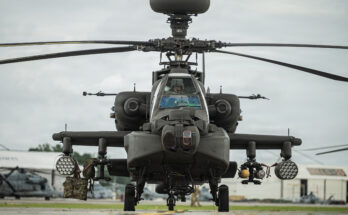
Boeing has been dropped from the USAF competition to develop a successor to the E-4B Nightwatch, according to a Reuters report. The E-4B, a modified Boeing 747, serves as a mobile airborne command headquarters during a national emergency or in the event of the destruction of ground command and control centers. The aircraft is often referred to as the Doomsday plane.
Now only Sierra Nevada Corp (SNC) remains in the running for the Survivable Airborne Operations Center (SAOC) contract. In its attempt to win the contract, SNC opened a new hangar facility at the Dayton, Ohio, airport complex in July 2023. The 90,000-square-foot facility will focus on maintenance, repair and overhaul and is part of the company’s effort to capture the SAOC contract.
According to the Reuters report, sources indicated that Boeing was declining to sign a fixed-price contract that could leave it responsible for covering costs exceeding the stipulated amount.
The Air Force needs a replacement for its four E-4B National Airborne Operations Center (NAOC) aircraft. A contract award for the SAOC is expected in 2024.
According to Forecast International’s International Military Markets – North America service, research and development for the program continues to ramp up. The Air Force requested $203.2 million in FY23 after receiving $50 million in FY21 and $95.8 million in FY22. However, Congress cut $105 million for the program in FY23. The FY24 request was ramped up to $888.8 million, which is $278 million more than originally planned. Funding will increase to $1.9 billion in FY25, with a total of $8.1 billion planned through the FYDP. The FY23 budget had only projected $3.2 billion over five years.
A military history enthusiast, Richard began at Forecast International as editor of the World Weapons Weekly newsletter. As the Internet grew in importance as a research tool, he helped design the company's Forecast Intelligence Center and currently coordinates the EMarket Alert newsletters for clients. Richard also manages social media efforts, including two new blogs: Defense & Security Monitor, covering defense systems and international issues, and Flight Plan, which focuses on commercial aviation and space systems. For over 30 years, Richard has authored the Defense & Aerospace Companies, Volume I (North America) and Volume II (International) services. The two books provide detailed data on major aerospace and defense contractors. He also edits the International Contractors service, a database that tracks all the contractors involved in the programs covered in the FI library. More recently he was appointed Manager, Information Services Group (ISG), a new unit that encompasses developing outbound content for both Forecast International and Military Periscope.



